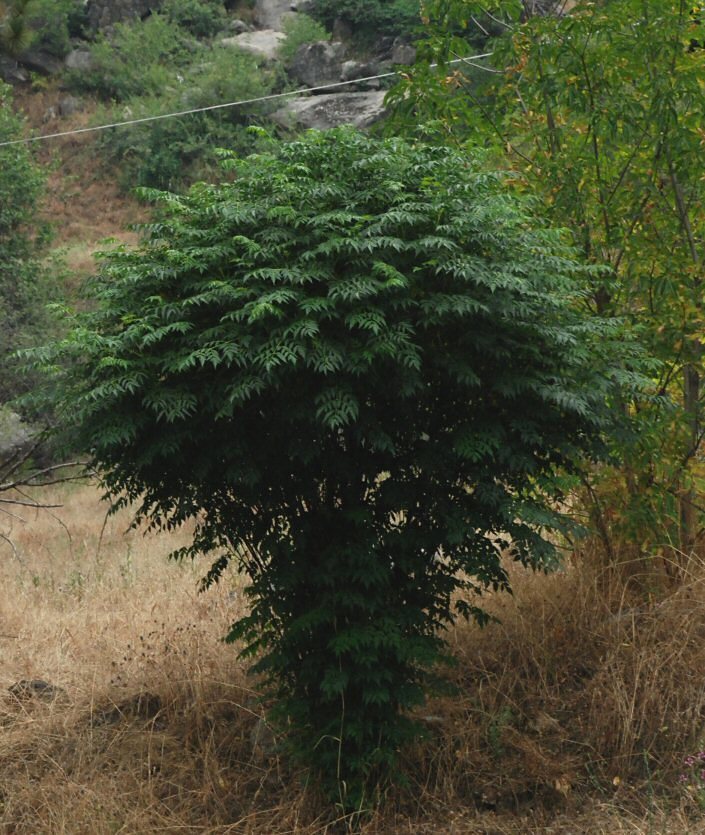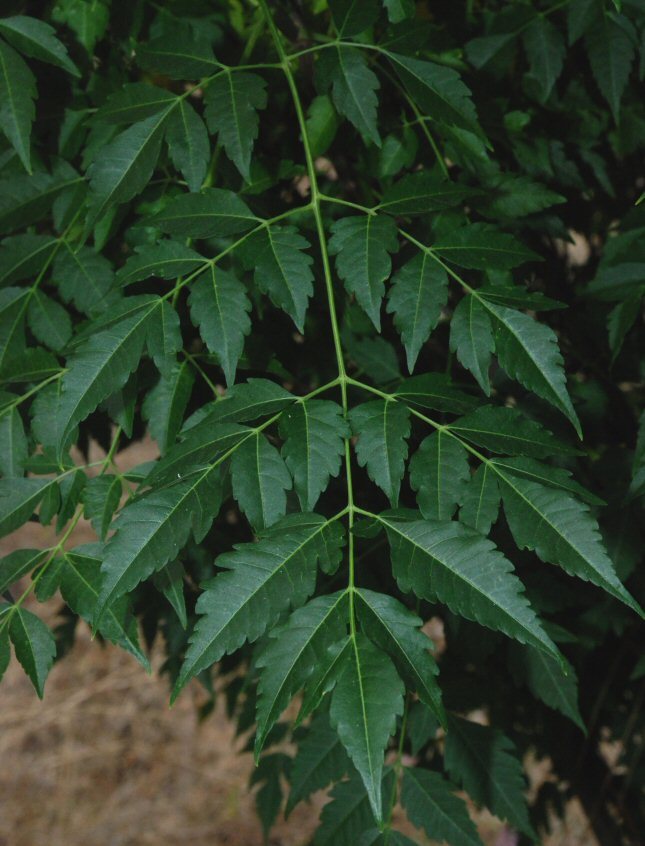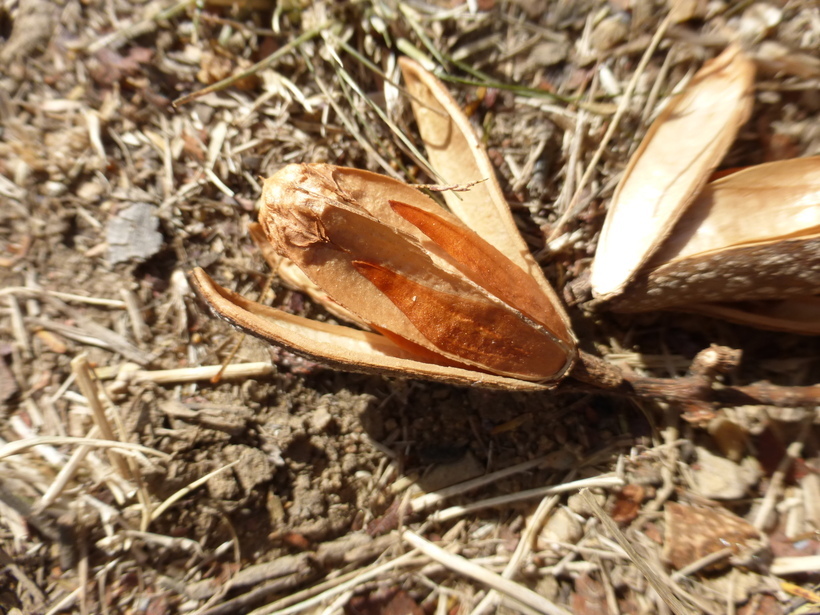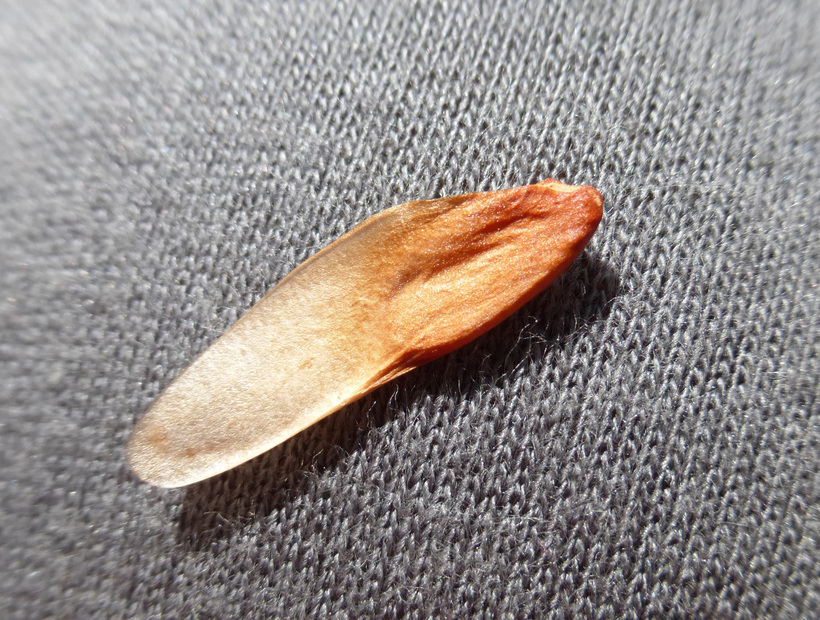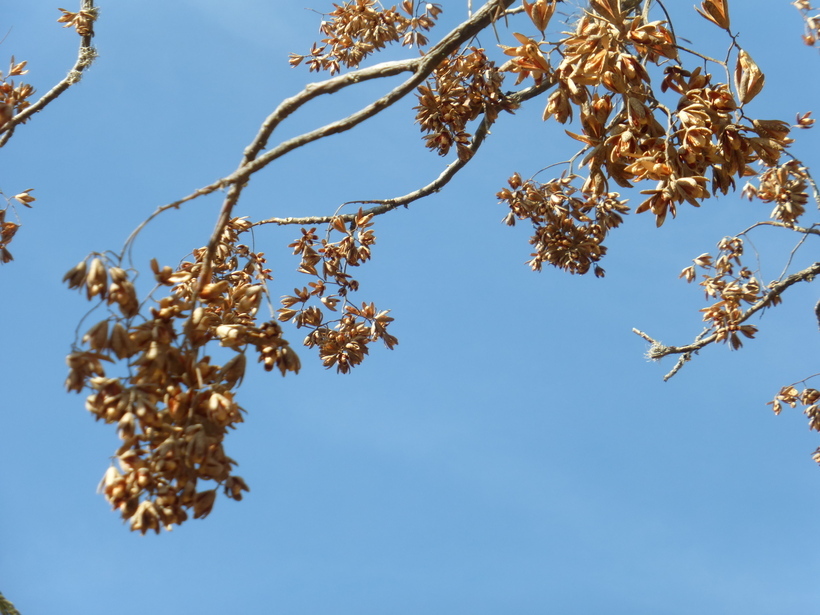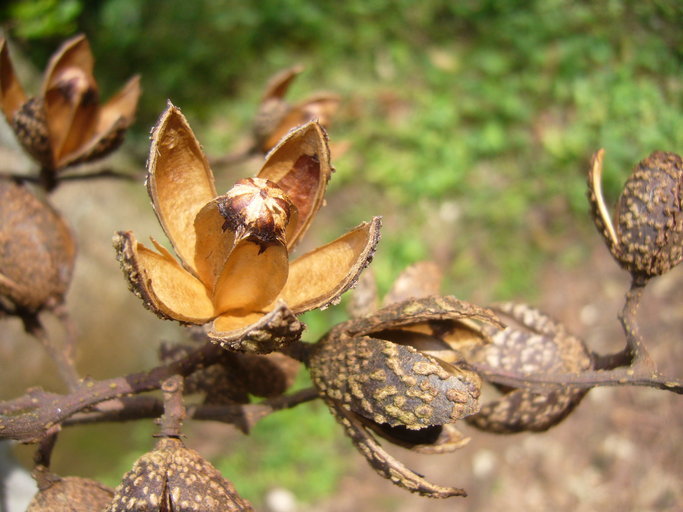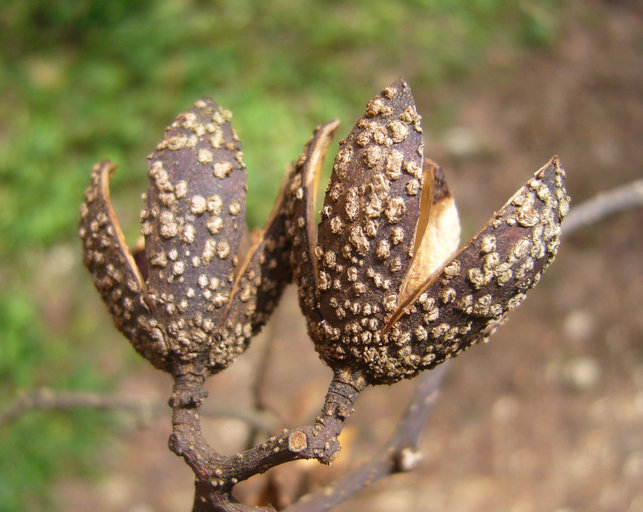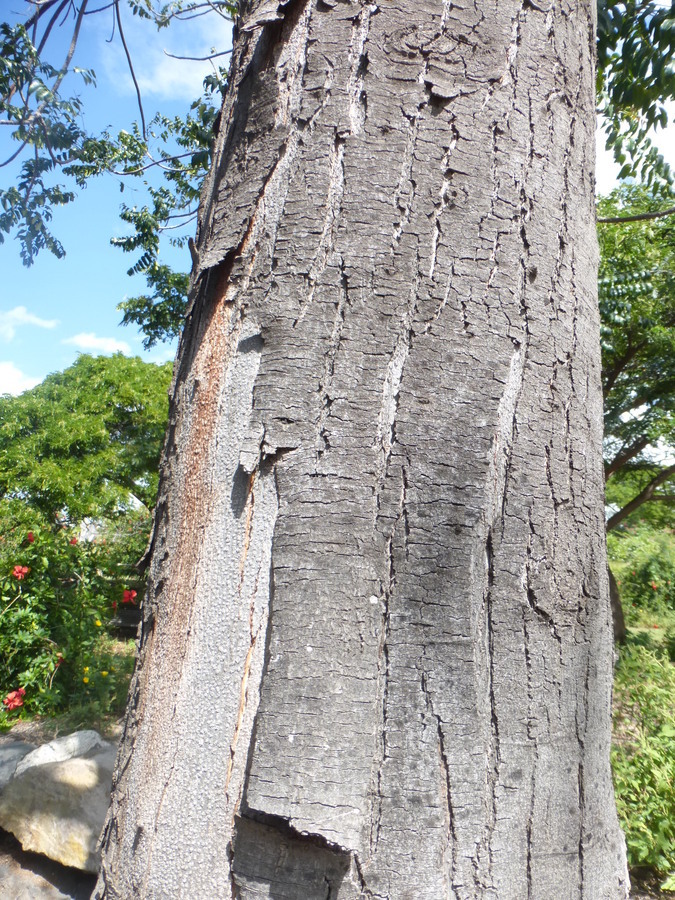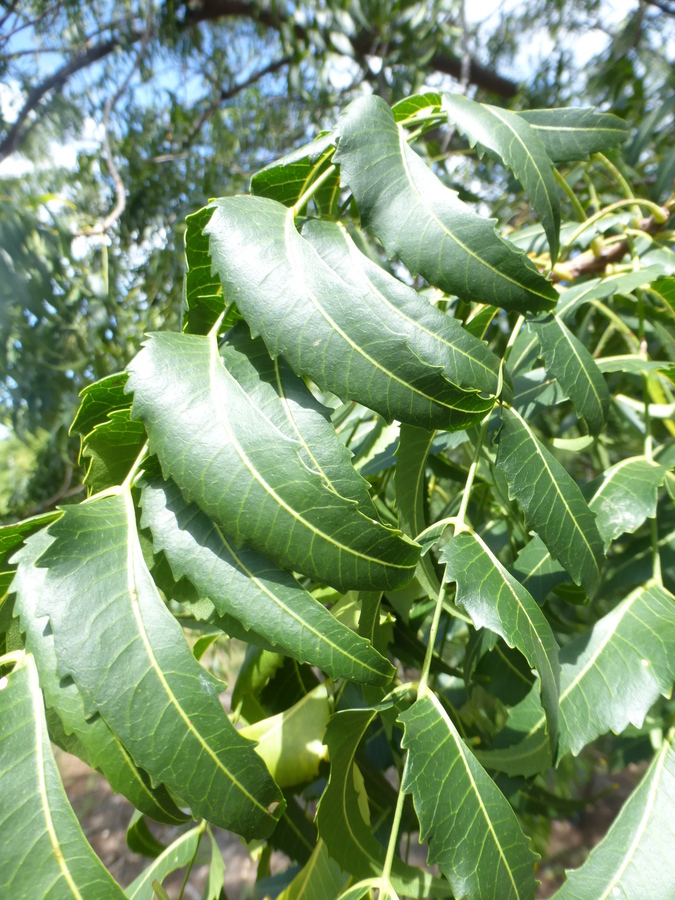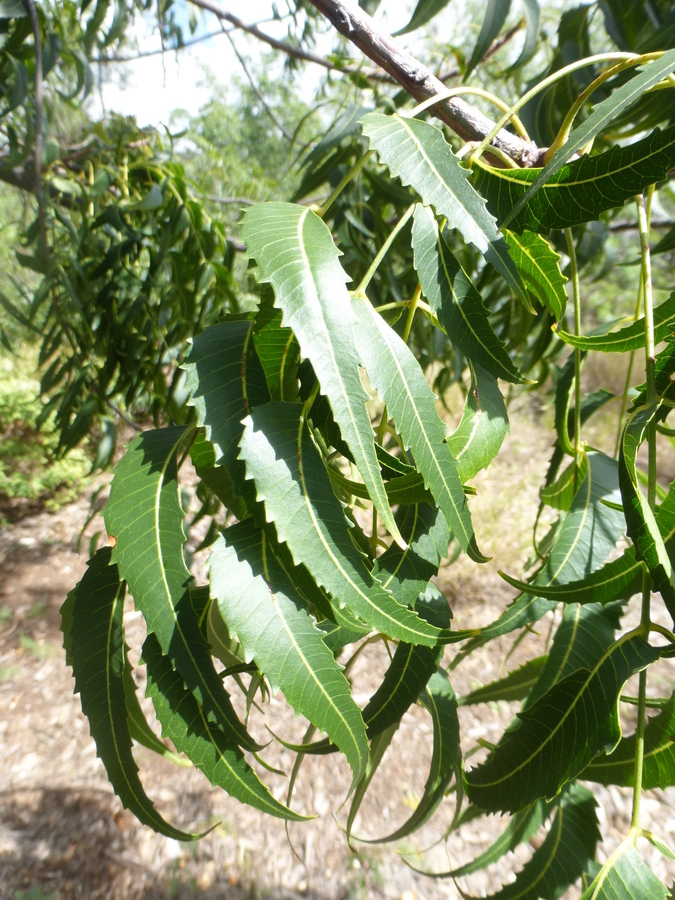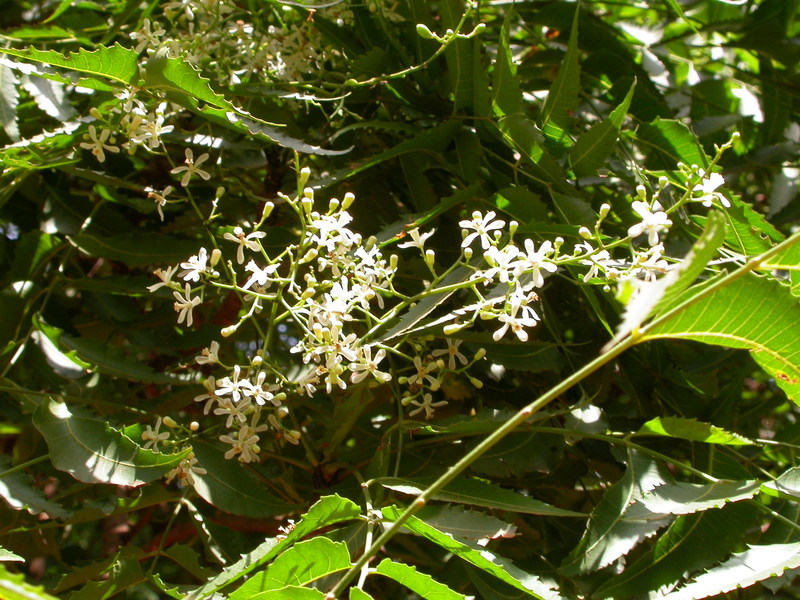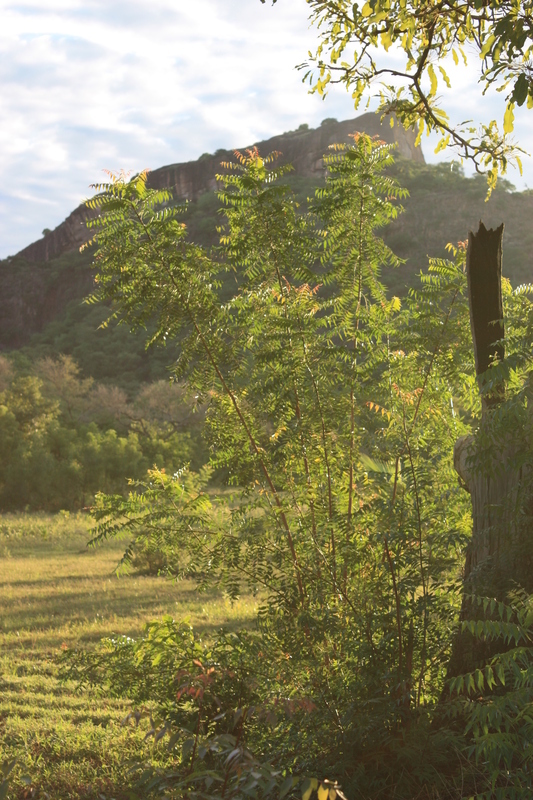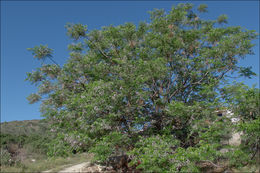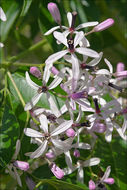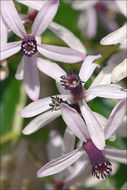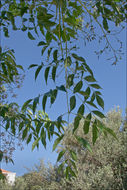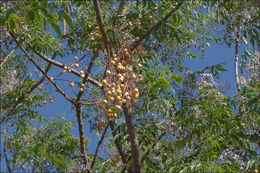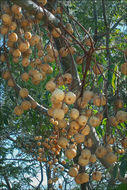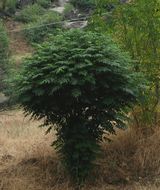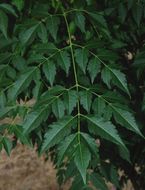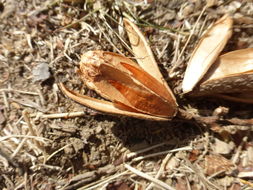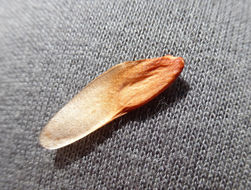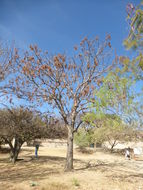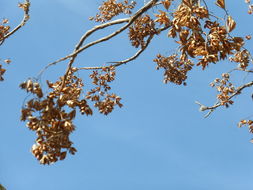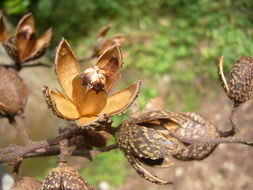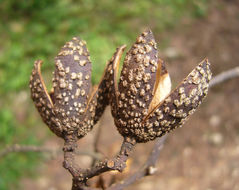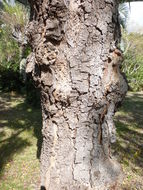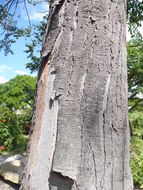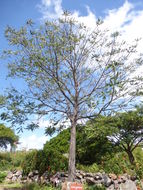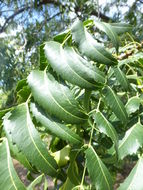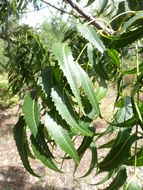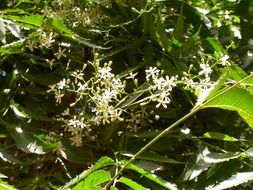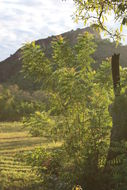-
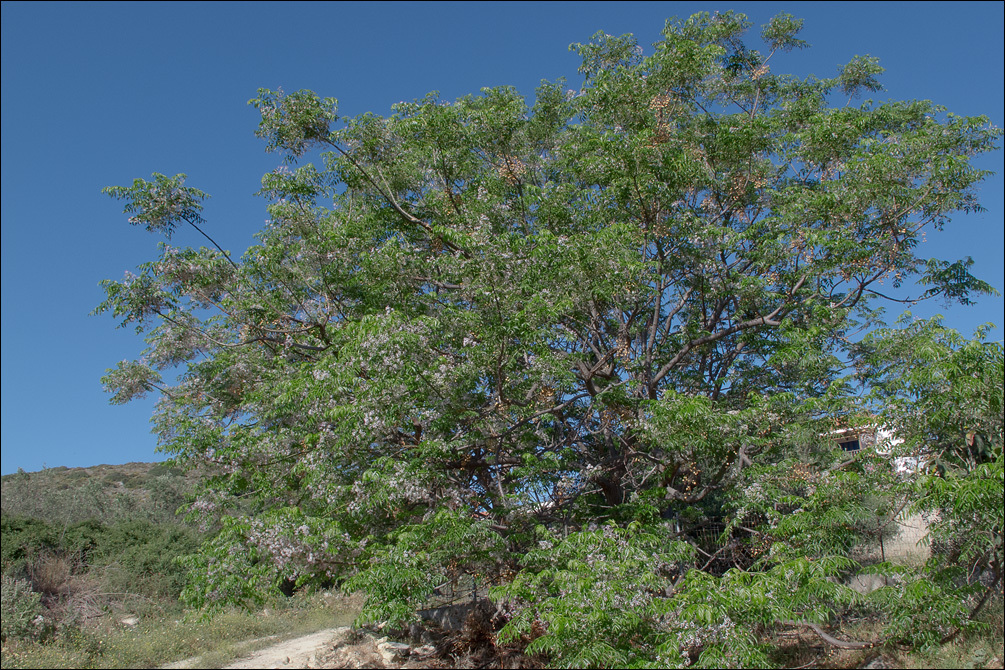
Slo.: melija - syn.: Melia japonica G.Don. - Habitat: Semiruderal place, dirt road and yard side, almost flat terrain; skeletal ground, full sun, dry place; elevation 35 m (115 feet); average precipitations 900 - 1100 mm/year, average temperature about 18 deg C, Mediterranean phytogeographical region. Substratum: soil.Comment: Melia azedarach is a beautiful tree in the mahogany family (Meliaceae). It impresses not only with zillion pleasantly fragrant flowers but also because of picturesque clusters of yellowish fruits, which remain in place during the winter time and sometimes more than one year. Its native regions are Southeast Asia and Australia; however, today it is grown in almost the whole Mediterranean region, on same places it is already naturalized. Fruits are very hard, globose, marble-sized, stalked berries that can be dangerous on sidewalks. They also contain several poisons, which can harm humans. Poisoning may result in gastrointestinal, cardiovascular, respiratory and other problems and even death in extreme cases. Less than ten berries can kill a person. Birds, however, can tolerate them, so they eat the fruit and spread the seeds. Also bees are happy with abundant nectar when the tree is in bloom.Melia azedarach tree is locally important as firewood. Its wood is of high quality and comparable to teak (Tectona grandis). So, it is used in production of music instruments, toys, tools and in China in ship and boat construction. Fruits are used in production of soap, paints, candles, etc. Traditionally it is also a medical plant used against human bowel parasites. No wander, Melia azedarach is considered a holy tree in several Asian countries.Ref.:(1) M. Blamey, C. Grey-Wilson, Wild Flowers of the Mediterranean, A & C Black, London (2005), p 124.(2) R. Brus, Drevesa in grmi Jadrana (Trees and bushes of Aria) (in Slovenian), Mordian Pub. (2012), p 352.
-
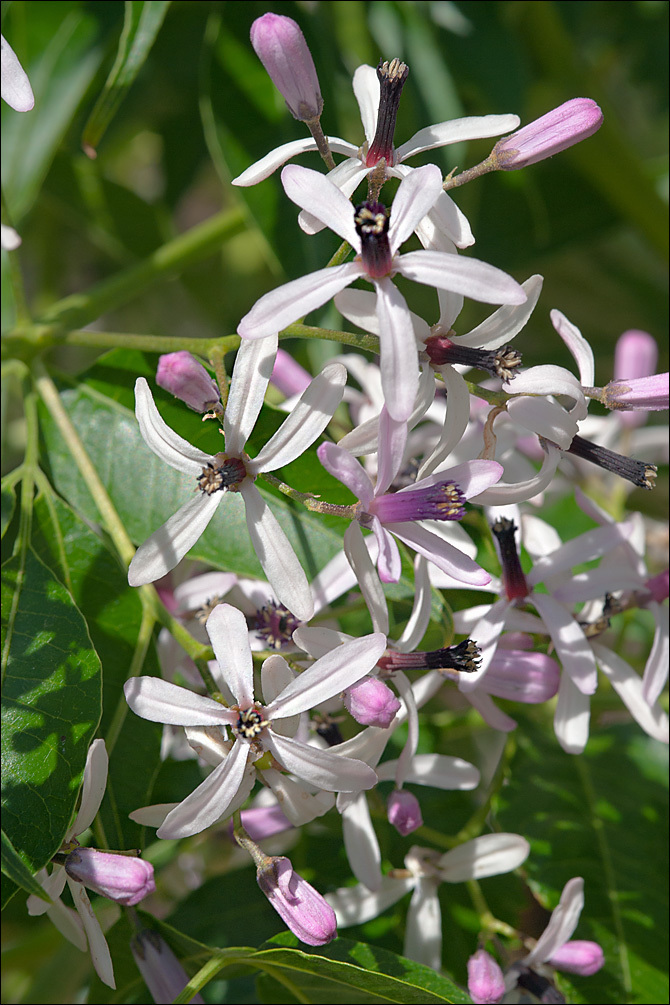
Slo.: melija - syn.: Melia japonica G.Don. - Habitat: Semiruderal place, dirt road and yard side, almost flat terrain; skeletal ground, full sun, dry place; elevation 35 m (115 feet); average precipitations 900 - 1100 mm/year, average temperature about 18 deg C, Mediterranean phytogeographical region. Substratum: soil. Comment: Melia azedarach is a beautiful tree in the mahogany family (Meliaceae). It impresses not only with zillion pleasantly fragrant flowers but also because of picturesque clusters of yellowish fruits, which remain in place during the winter time and sometimes more than one year. Its native regions are Southeast Asia and Australia; however, today it is grown in almost the whole Mediterranean region, on same places it is already naturalized. Fruits are very hard, globose, marble-sized, stalked berries that can be dangerous on sidewalks. They also contain several poisons, which can harm humans. Poisoning may result in gastrointestinal, cardiovascular, respiratory and other problems and even death in extreme cases. Less than ten berries can kill a person. Birds, however, can tolerate them, so they eat the fruit and spread the seeds. Also bees are happy with abundant nectar when the tree is in bloom. Melia azedarach tree is locally important as firewood. Its wood is of high quality and comparable to teak (Tectona grandis). So, it is used in production of music instruments, toys, tools and in China in ship and boat construction. Fruits are used in production of soap, paints, candles, etc. Traditionally it is also a medical plant used against human bowel parasites. No wander, Melia azedarach is considered a holy tree in several Asian countries. Ref.: (1) M. Blamey, C. Grey-Wilson, Wild Flowers of the Mediterranean, A & C Black, London (2005), p 124. (2) R. Brus, Drevesa in grmi Jadrana (Trees and bushes of Aria) (in Slovenian), Mordian Pub. (2012), p 352.
-

Slo.: melija - syn.: Melia japonica G.Don. - Habitat: Semiruderal place, dirt road and yard side, almost flat terrain; skeletal ground, full sun, dry place; elevation 35 m (115 feet); average precipitations 900 - 1100 mm/year, average temperature about 18 deg C, Mediterranean phytogeographical region. Substratum: soil. Comment: Melia azedarach is a beautiful tree in the mahogany family (Meliaceae). It impresses not only with zillion pleasantly fragrant flowers but also because of picturesque clusters of yellowish fruits, which remain in place during the winter time and sometimes more than one year. Its native regions are Southeast Asia and Australia; however, today it is grown in almost the whole Mediterranean region, on same places it is already naturalized. Fruits are very hard, globose, marble-sized, stalked berries that can be dangerous on sidewalks. They also contain several poisons, which can harm humans. Poisoning may result in gastrointestinal, cardiovascular, respiratory and other problems and even death in extreme cases. Less than ten berries can kill a person. Birds, however, can tolerate them, so they eat the fruit and spread the seeds. Also bees are happy with abundant nectar when the tree is in bloom. Melia azedarach tree is locally important as firewood. Its wood is of high quality and comparable to teak (Tectona grandis). So, it is used in production of music instruments, toys, tools and in China in ship and boat construction. Fruits are used in production of soap, paints, candles, etc. Traditionally it is also a medical plant used against human bowel parasites. No wander, Melia azedarach is considered a holy tree in several Asian countries. Ref.: (1) M. Blamey, C. Grey-Wilson, Wild Flowers of the Mediterranean, A & C Black, London (2005), p 124. (2) R. Brus, Drevesa in grmi Jadrana (Trees and bushes of Aria) (in Slovenian), Mordian Pub. (2012), p 352.
-
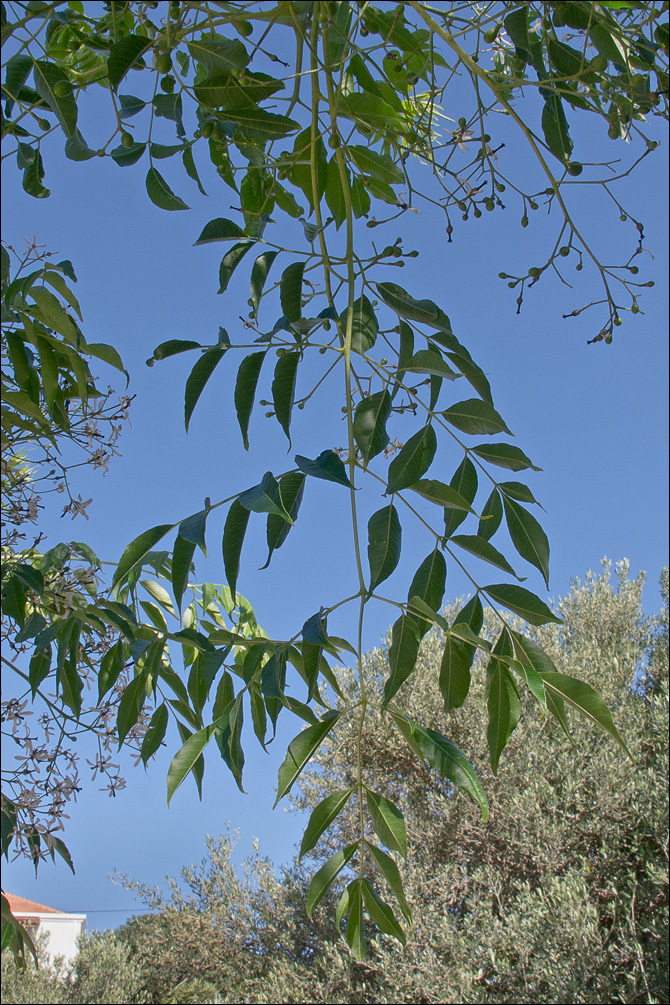
Slo.: melija - syn.: Melia japonica G.Don. - Habitat: Semiruderal place, dirt road and yard side, almost flat terrain; skeletal ground, full sun, dry place; elevation 35 m (115 feet); average precipitations 900 - 1100 mm/year, average temperature about 18 deg C, Mediterranean phytogeographical region. Substratum: soil. Comment: Melia azedarach is a beautiful tree in the mahogany family (Meliaceae). It impresses not only with zillion pleasantly fragrant flowers but also because of picturesque clusters of yellowish fruits, which remain in place during the winter time and sometimes more than one year. Its native regions are Southeast Asia and Australia; however, today it is grown in almost the whole Mediterranean region, on same places it is already naturalized. Fruits are very hard, globose, marble-sized, stalked berries that can be dangerous on sidewalks. They also contain several poisons, which can harm humans. Poisoning may result in gastrointestinal, cardiovascular, respiratory and other problems and even death in extreme cases. Less than ten berries can kill a person. Birds, however, can tolerate them, so they eat the fruit and spread the seeds. Also bees are happy with abundant nectar when the tree is in bloom. Melia azedarach tree is locally important as firewood. Its wood is of high quality and comparable to teak (Tectona grandis). So, it is used in production of music instruments, toys, tools and in China in ship and boat construction. Fruits are used in production of soap, paints, candles, etc. Traditionally it is also a medical plant used against human bowel parasites. No wander, Melia azedarach is considered a holy tree in several Asian countries. Ref.: (1) M. Blamey, C. Grey-Wilson, Wild Flowers of the Mediterranean, A & C Black, London (2005), p 124. (2) R. Brus, Drevesa in grmi Jadrana (Trees and bushes of Aria) (in Slovenian), Mordian Pub. (2012), p 352.
-
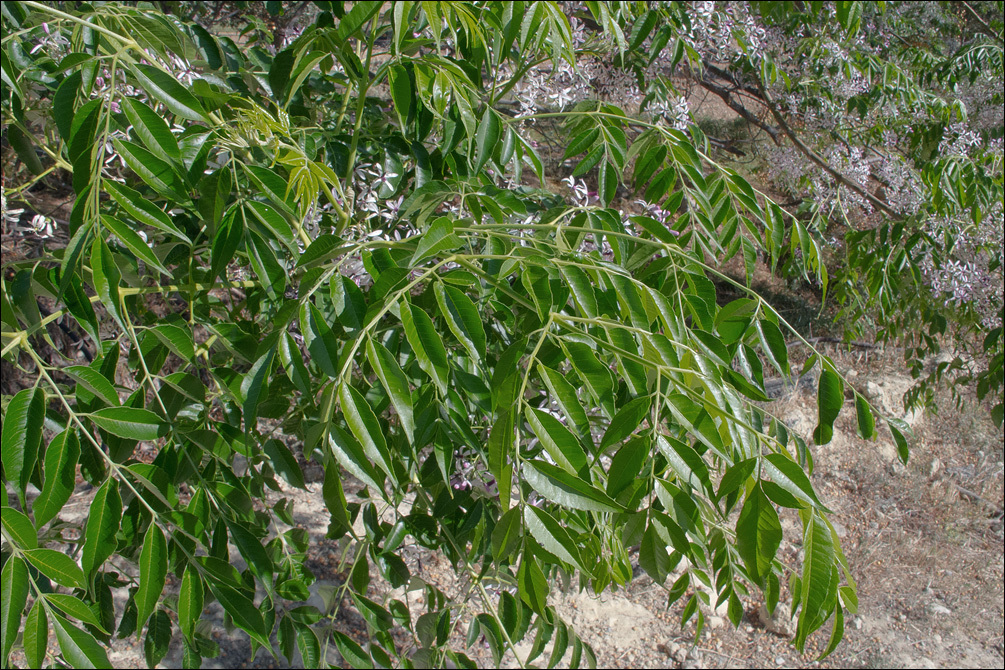
Slo.: melija - syn.: Melia japonica G.Don. - Habitat: Semiruderal place, dirt road and yard side, almost flat terrain; skeletal ground, full sun, dry place; elevation 35 m (115 feet); average precipitations 900 - 1100 mm/year, average temperature about 18 deg C, Mediterranean phytogeographical region. Substratum: soil. Comment: Melia azedarach is a beautiful tree in the mahogany family (Meliaceae). It impresses not only with zillion pleasantly fragrant flowers but also because of picturesque clusters of yellowish fruits, which remain in place during the winter time and sometimes more than one year. Its native regions are Southeast Asia and Australia; however, today it is grown in almost the whole Mediterranean region, on same places it is already naturalized. Fruits are very hard, globose, marble-sized, stalked berries that can be dangerous on sidewalks. They also contain several poisons, which can harm humans. Poisoning may result in gastrointestinal, cardiovascular, respiratory and other problems and even death in extreme cases. Less than ten berries can kill a person. Birds, however, can tolerate them, so they eat the fruit and spread the seeds. Also bees are happy with abundant nectar when the tree is in bloom. Melia azedarach tree is locally important as firewood. Its wood is of high quality and comparable to teak (Tectona grandis). So, it is used in production of music instruments, toys, tools and in China in ship and boat construction. Fruits are used in production of soap, paints, candles, etc. Traditionally it is also a medical plant used against human bowel parasites. No wander, Melia azedarach is considered a holy tree in several Asian countries. Ref.: (1) M. Blamey, C. Grey-Wilson, Wild Flowers of the Mediterranean, A & C Black, London (2005), p 124. (2) R. Brus, Drevesa in grmi Jadrana (Trees and bushes of Aria) (in Slovenian), Mordian Pub. (2012), p 352.
-

Slo.: melija - syn.: Melia japonica G.Don. - Habitat: Semiruderal place, dirt road and yard side, almost flat terrain; skeletal ground, full sun, dry place; elevation 35 m (115 feet); average precipitations 900 - 1100 mm/year, average temperature about 18 deg C, Mediterranean phytogeographical region. Substratum: soil. Comment: Melia azedarach is a beautiful tree in the mahogany family (Meliaceae). It impresses not only with zillion pleasantly fragrant flowers but also because of picturesque clusters of yellowish fruits, which remain in place during the winter time and sometimes more than one year. Its native regions are Southeast Asia and Australia; however, today it is grown in almost the whole Mediterranean region, on same places it is already naturalized. Fruits are very hard, globose, marble-sized, stalked berries that can be dangerous on sidewalks. They also contain several poisons, which can harm humans. Poisoning may result in gastrointestinal, cardiovascular, respiratory and other problems and even death in extreme cases. Less than ten berries can kill a person. Birds, however, can tolerate them, so they eat the fruit and spread the seeds. Also bees are happy with abundant nectar when the tree is in bloom. Melia azedarach tree is locally important as firewood. Its wood is of high quality and comparable to teak (Tectona grandis). So, it is used in production of music instruments, toys, tools and in China in ship and boat construction. Fruits are used in production of soap, paints, candles, etc. Traditionally it is also a medical plant used against human bowel parasites. No wander, Melia azedarach is considered a holy tree in several Asian countries. Ref.: (1) M. Blamey, C. Grey-Wilson, Wild Flowers of the Mediterranean, A & C Black, London (2005), p 124. (2) R. Brus, Drevesa in grmi Jadrana (Trees and bushes of Aria) (in Slovenian), Mordian Pub. (2012), p 352.
-
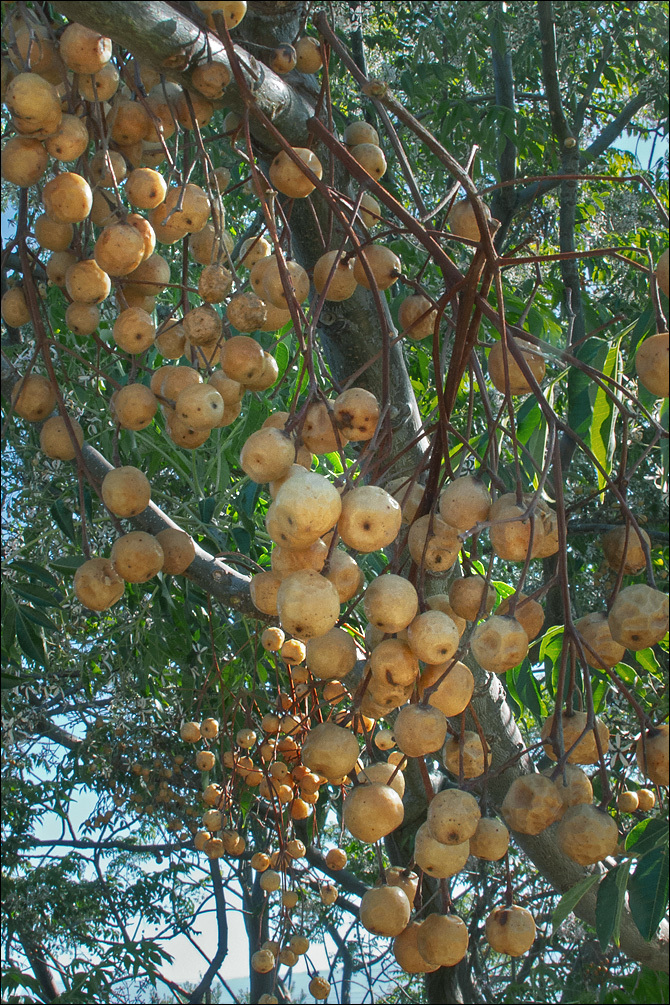
Slo.: melija - syn.: Melia japonica G.Don. - Habitat: Semiruderal place, dirt road and yard side, almost flat terrain; skeletal ground, full sun, dry place; elevation 35 m (115 feet); average precipitations 900 - 1100 mm/year, average temperature about 18 deg C, Mediterranean phytogeographical region. Substratum: soil. Comment: Melia azedarach is a beautiful tree in the mahogany family (Meliaceae). It impresses not only with zillion pleasantly fragrant flowers but also because of picturesque clusters of yellowish fruits, which remain in place during the winter time and sometimes more than one year. Its native regions are Southeast Asia and Australia; however, today it is grown in almost the whole Mediterranean region, on same places it is already naturalized. Fruits are very hard, globose, marble-sized, stalked berries that can be dangerous on sidewalks. They also contain several poisons, which can harm humans. Poisoning may result in gastrointestinal, cardiovascular, respiratory and other problems and even death in extreme cases. Less than ten berries can kill a person. Birds, however, can tolerate them, so they eat the fruit and spread the seeds. Also bees are happy with abundant nectar when the tree is in bloom. Melia azedarach tree is locally important as firewood. Its wood is of high quality and comparable to teak (Tectona grandis). So, it is used in production of music instruments, toys, tools and in China in ship and boat construction. Fruits are used in production of soap, paints, candles, etc. Traditionally it is also a medical plant used against human bowel parasites. No wander, Melia azedarach is considered a holy tree in several Asian countries. Ref.: (1) M. Blamey, C. Grey-Wilson, Wild Flowers of the Mediterranean, A & C Black, London (2005), p 124. (2) R. Brus, Drevesa in grmi Jadrana (Trees and bushes of Aria) (in Slovenian), Mordian Pub. (2012), p 352.
-
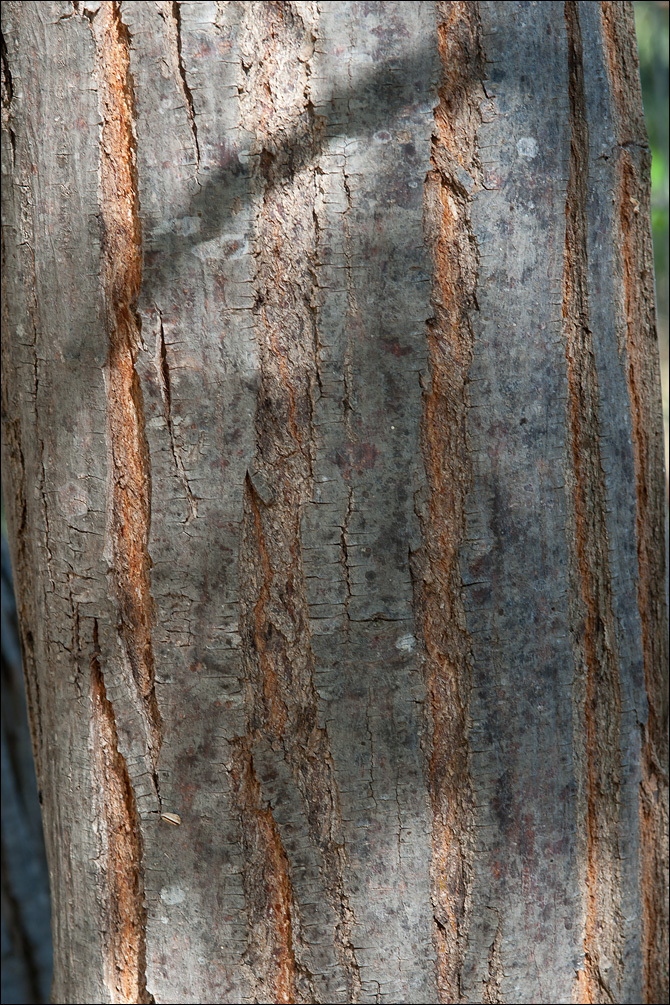
Slo.: melija - syn.: Melia japonica G.Don. - Habitat: Semiruderal place, dirt road and yard side, almost flat terrain; skeletal ground, full sun, dry place; elevation 35 m (115 feet); average precipitations 900 - 1100 mm/year, average temperature about 18 deg C, Mediterranean phytogeographical region. Substratum: soil. Comment: Melia azedarach is a beautiful tree in the mahogany family (Meliaceae). It impresses not only with zillion pleasantly fragrant flowers but also because of picturesque clusters of yellowish fruits, which remain in place during the winter time and sometimes more than one year. Its native regions are Southeast Asia and Australia; however, today it is grown in almost the whole Mediterranean region, on same places it is already naturalized. Fruits are very hard, globose, marble-sized, stalked berries that can be dangerous on sidewalks. They also contain several poisons, which can harm humans. Poisoning may result in gastrointestinal, cardiovascular, respiratory and other problems and even death in extreme cases. Less than ten berries can kill a person. Birds, however, can tolerate them, so they eat the fruit and spread the seeds. Also bees are happy with abundant nectar when the tree is in bloom. Melia azedarach tree is locally important as firewood. Its wood is of high quality and comparable to teak (Tectona grandis). So, it is used in production of music instruments, toys, tools and in China in ship and boat construction. Fruits are used in production of soap, paints, candles, etc. Traditionally it is also a medical plant used against human bowel parasites. No wander, Melia azedarach is considered a holy tree in several Asian countries. Ref.: (1) M. Blamey, C. Grey-Wilson, Wild Flowers of the Mediterranean, A & C Black, London (2005), p 124. (2) R. Brus, Drevesa in grmi Jadrana (Trees and bushes of Aria) (in Slovenian), Mordian Pub. (2012), p 352.
-
-
-
-
-
-
-
-
-
-
-
-
-
-
-
-










